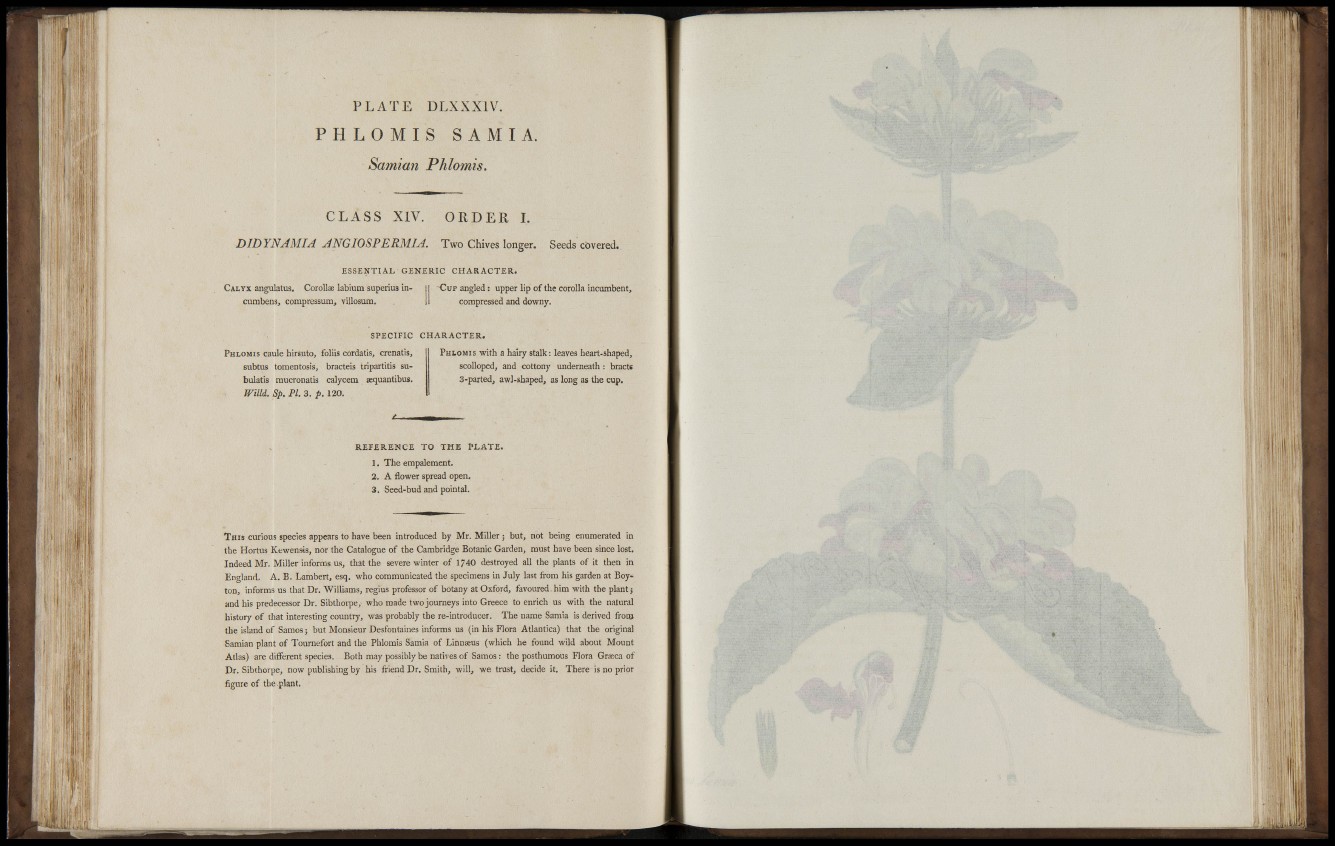
Phlomis with a hairy stalk: leaves heart-shaped,
scolloped, and cottony underneath : bracts
3-parted, awl-shaped, as long as the cup.
REFERENCE TO THE PLATE.
1. The empalement.
2. A flower spread open.
3. Seed-bud and pointal.
This curious species appears to have been introduced by Mr. Miller; but, not being enumerated in
the Hortus Kewensis, nor the Catalogue of the Cambridge Botanic Garden, must have been since lost.
Indeed Mr. Miller informs us, that the severe winter of 1740 destroyed all the plants of it then in
England. A. B. Lambert, esq. who communicated the specimens in July last from his garden at Boy
ton, informs us that Dr. Williams, regius professor of botany at Oxford, favoured him with the plant;
and his predecessor Dr. Sibthorpe, who made two journeys into Greece to enrich us with the natural
history of that interesting country, was probably the re-introducer. The name Samia is derived from
the island of Samos; but Monsieur Desfontaines informs us (in his Flora Atlantica) that the original
Samian plant of Tournefort and the Phlomis Samia of Linnaeus (which he found wild about Mount
Atlas) are diiFerent species. Both may possibly be natives of Samos: the posthumous Flora Graeca of
Dr. Sibthorpe, now publishing by his friend Dr. Smith, will, we trust, decide it. There is no prior
figure of the plant.
L I I . I R -
f i l i .
• M )
' ii! ::
• M I L I